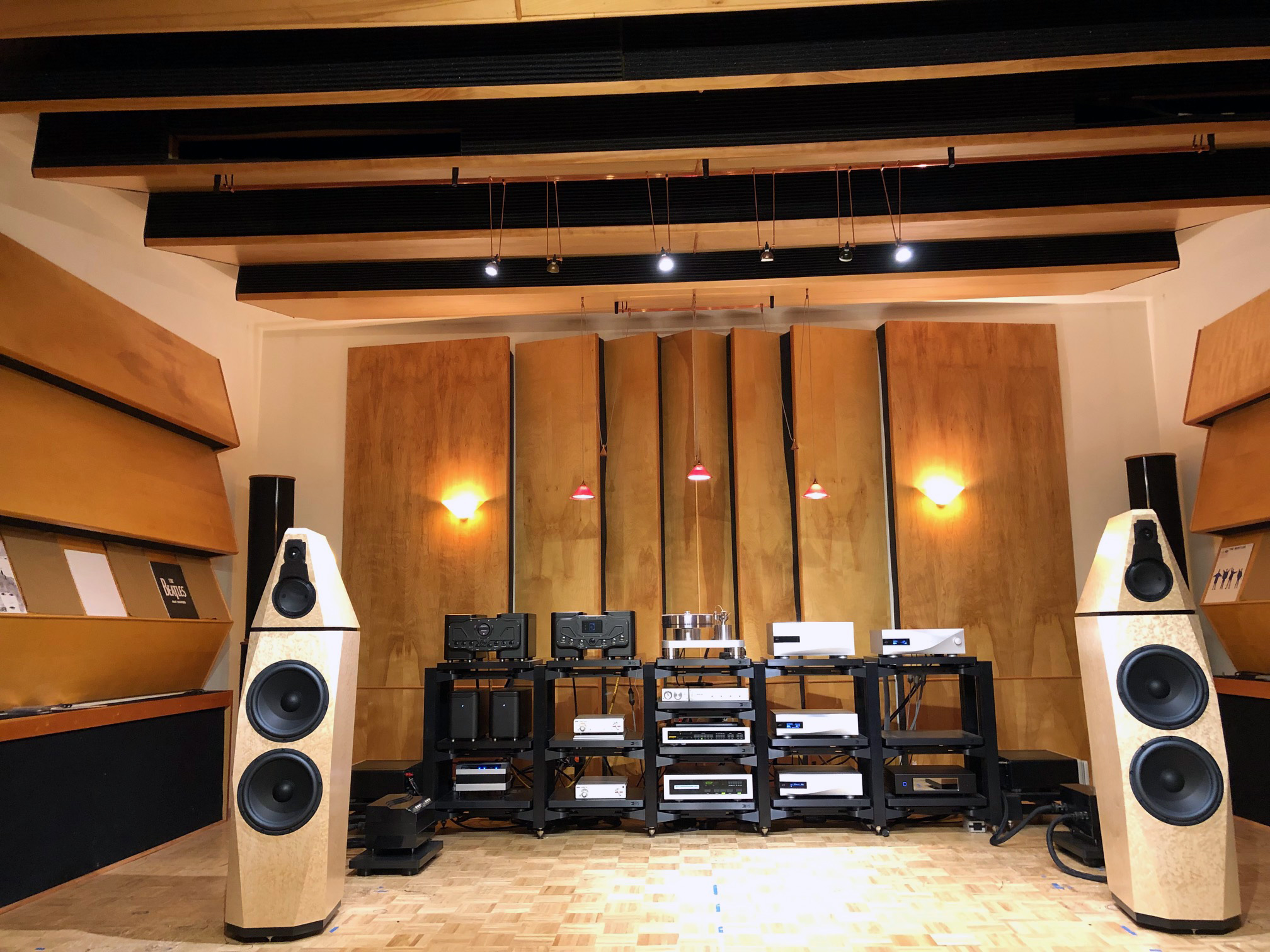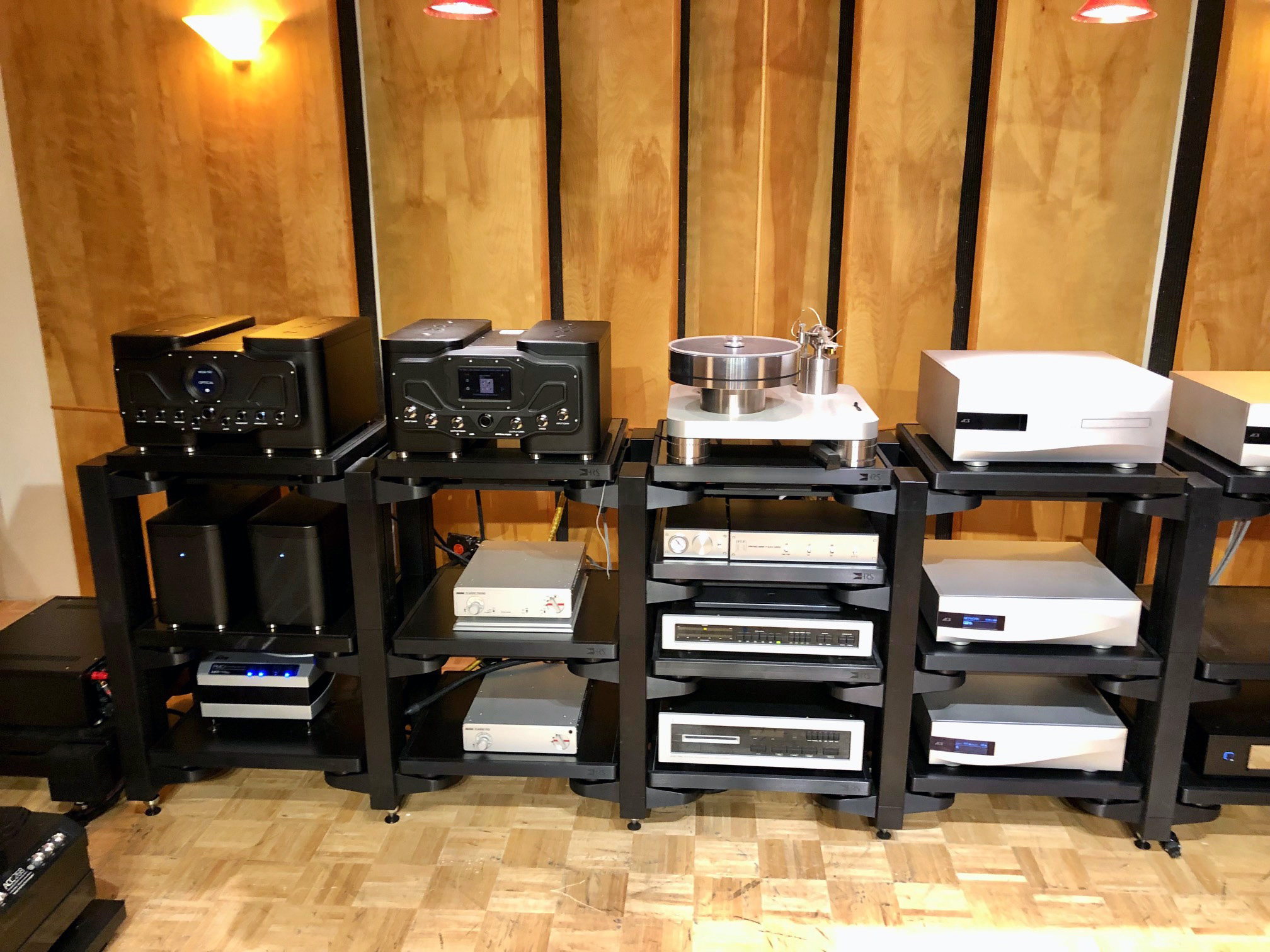Introduction
We are all no doubt familiar with the reality of dwindling number of brick-and-mortar audio shops. The loss is a real problem for two reasons: (1) it makes it a great deal more difficult to audition equipment that could have potential for purchase; and (2) it makes it harder to determine which combinations of equipment have synergy.
Twenty years ago, if an audiophile wanted to experience the best sound that could be had in a home system, there was a small group of specialist stores — generally in very large cities, such as New York, Chicago, Los Angeles, San Francisco, or Boston — where that could be found. Perhaps more importantly, those same stores were owned and staffed by extremely knowledgeable audiophiles. Most of those stores no longer exist. Instead, hobbyists are forced to rely on reviews either in print or on the internet in lieu of being able to listen for themselves. System building is so much more than merely assembling Class A components. It involves knowing not only what is best but also which combinations work well together to yield something magical.
This leads me to write about a recent trip to Goodwin’s High End outside Boston with my friend Charles, who is involved in a rather extensive renovation of his home. Part of the renovation is improving what is already an acoustically benign listening room; the second part is deciding which pieces of his current system might benefit from upgrades. Charles is an architect and spent considerable time and money designing his room.
He and I traveled to Boston and spent a day and a half at Goodwin’s High End. The visit began with a lengthy dialogue with Alan Goodwin who is an anomaly in the modern audio world. Alan has been in the audio business most of his adult life and is extremely knowledgeable. He has worked closely with many of the great designers: Mark Levinson and Tom Colangelo, A. J. Conti (Basis Audio), Rick Fryer and Keith Johnson (Spectral Audio), to name a few. This has provided him a unique perspective.
Alan spoke about his quest to find a reference against which he could then compare equipment he might want to carry in his store. In the end, he purchased a Studer A80 half-track 30 IPS tape recorder and then had Mark Levinson replace the electronics with what then represented the state of the art. Subsequently, he used the modified Studer to record live performances, which he then played back on a variety of equipment/systems trying to come as close as was possible to the live event. He soon found that it was impossible to recreate what he had recorded without first designing and constructing an acoustically neutral listening space.
Alan’s success has allowed him to have access to almost any brand of equipment that he might desire to carry, but he chooses to work with a small number of key manufacturers. He seldom adds new equipment, which is to say that he is the polar opposite of most reviewers’ flavor of the month approach.
This article seeks to capture that visit and talk about the equipment we auditioned. First, a caveat: the room and the equipment we listened to were not things with which I had any real familiarity, so this is not intended to be a review. However, Charles owns the original Avalon Isis speakers, Spectral electronics, and a Basis turntable, and I am familiar with Charles’s system. Likewise, another friend also owns the original Isis speakers, though he drives them with Ypsilon electronics.
The Room
The listening room was a multi-year project, constructed from a raw, open space. It is totally isolated from outside noise and was designed to take room colorations out of the equation. It is heavily treated. The room dimensions, height, width, length, were chosen to carefully distribute the room’s resonances over a broad range of frequencies in order to prevent a bunching or dropout of music at certain frequencies.
The floors are concrete and the walls are constructed to be exceedingly rigid and internally damped. The electrical service was designed to provide the high current, superior shielding, and proper grounding that today’s best electronics require. It is one of the best acoustic spaces I have heard in a store or a home. It was designed by people who knew what they were doing.
Given that our ears are more sensitive to the human voice than any other sound, Alan demonstrated the room’s neutrality by walking around the room while talking at a normal volume. His voice did not change with respect to pitch, tonality or loudness as he walked.
The Equipment
The electronics (Spectral preamp and mono amps), the Avalon Isis Signature speakers, and the top MIT interconnects, speaker wire and power cords were a constant throughout the listening sessions. The sources (Wadax and dCS using Roon to stream, Spectral for playing CDs, and the Basis Transcendence turntable) constituted the variables.
Speakers: Avalon Isis Signature
Digital:
Spectral SDR-4000SV CD Player
dCS Vivaldi Apex DAC
dCS Vivaldi Upsampler
dCS Vivaldi Master Clock
dCS Vivaldi Transport
WADAX Atlantis Reference DAC
WADAX Atlantis Reference Server
WADAX AKASA Optical Interface
Innuos PhoenixNET Ethernet isolator
Electronics:
Spectral DMC-30SV Series II “Super Veloce” Reference LinePreamplifier
Spectral DMA-500SV “Super Veloce” MonauralPower Amps
Analog:
Basis Audio A. J. Conti Transcendence Turntable with Super Platter, Synchro-Wave power supply and vacuum hold down
Basis Audio Super Arm 12.5 Tonearm
Mysonic Labs Signature Gold Cartridge
Nagra phono stage with separate power supply
Analog Cables:
MIT ACC 268Rev.2 Articulation Control Console
MIT 2C3D Level One speaker cables
MIT Reference Interconnects
Digital Cables:
Shunyata Omega AES-EBU
Shunyata Omega 75 ohm Work Clock SPDIF
Shunyata Omega Ethernet
Shunyata Omega USB
Power:
MIT AC Power Cords
MIT Power Management Console AC Line conditioner
Nordost QB8 Mark II Star Ground AC Line Distribution
Equipment Stands and Amplifier stands:
Harmonic Resolution Systems VXR
The Music
Rutter Requiem, Reference Recordings
Janis Ian, Breaking Silence
Jennifer Warnes, Famous Blue Raincoat, The Well
Natalie Merchant, Tiger Lilly, Mobile Fidelity LP
Yes, Fragile, Mobile Fidelity One Step 45 rpm
- (Page 1 of 2)
- Next page →




the new extremes in digital
appears to be closing in on what analogue can achieve…